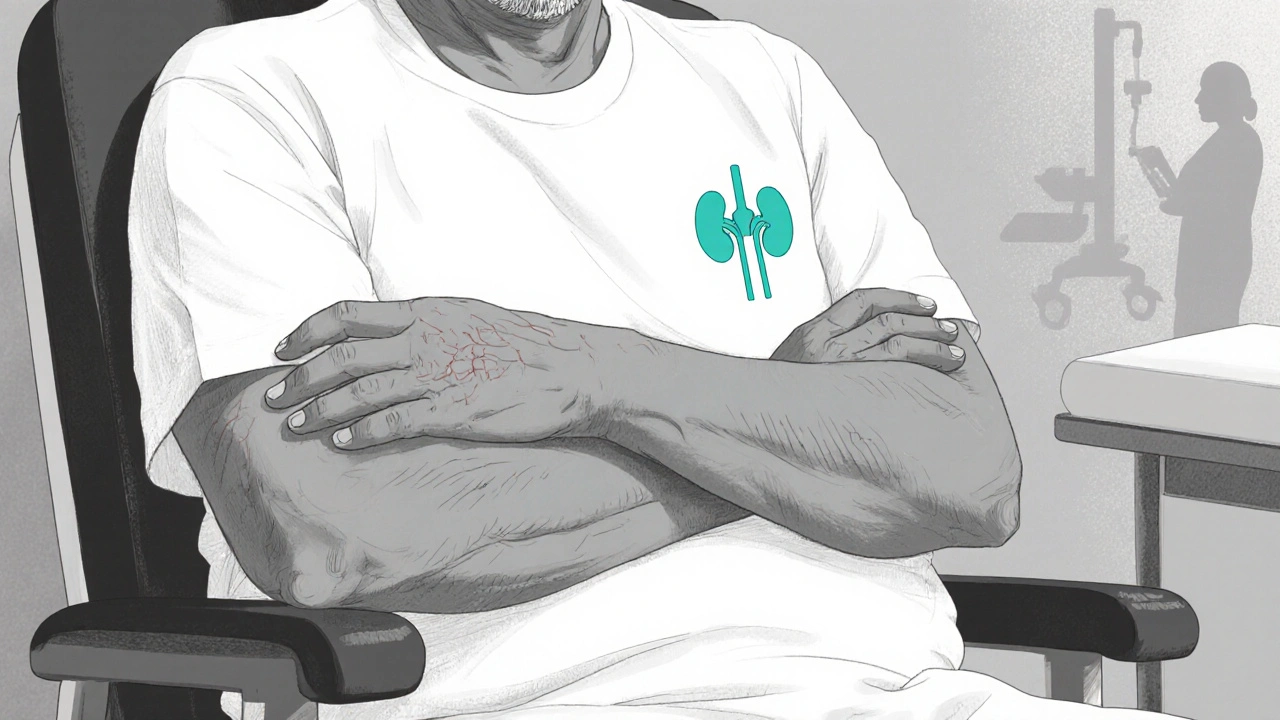CKD Itching Causes: Understanding Why Pruritus Happens in Chronic Kidney Disease
When working with CKD itching causes, the set of factors that trigger itching in people with chronic kidney disease. Also known as uremic pruritus triggers, it covers biochemical, treatment‑related, and skin‑level contributors. One of the biggest drivers is uremic toxins, waste products that build up when kidneys can’t filter properly. These solutes irritate nerve endings in the skin and can make even a light breeze feel scratchy. Another key piece is dialysis adequacy, how well a dialysis session clears toxins and balances fluids. Inadequate clearance leaves more toxins circulating, worsening the itch. Electrolyte imbalance, especially high calcium or phosphate levels can also flare pruritus by depositing crystals in the skin. Finally, dry skin, a common side effect of reduced sweating and fluid restrictions removes the protective barrier, letting irritants contact nerve endings more easily. All these factors overlap, creating a loop where one problem feeds another, and that loop is what most patients notice as relentless itching.
Beyond the core triggers, several secondary contributors often appear in real‑world cases. Anemia, which many CKD patients develop, reduces oxygen delivery to skin cells and can heighten sensory nerve sensitivity. Certain medications—like antihistamines, iron supplements, or even some blood pressure pills—may paradoxically aggravate itch by altering histamine pathways or changing skin pH. Lifestyle habits matter too; strict fluid limits can dry out mucous membranes, and low‑protein diets sometimes lack essential fatty acids that keep skin supple. The immune system also plays a role: chronic inflammation in CKD raises cytokines such as interleukin‑31, a known itch mediator. When these cytokines rise, they signal the spinal cord to amplify itch signals, making the sensation feel stronger than the underlying skin condition would suggest. Understanding that CKD itching causes are not a single problem but a network of biochemical, mechanical, and therapeutic factors helps clinicians target treatment more precisely—whether that means upping dialysis time, adjusting phosphate binders, adding moisturizers, or using newer anti‑itch drugs that block specific nerve pathways.
What you’ll find in the articles below is a mix of practical advice, deeper dives into each cause, and up‑to‑date research on emerging therapies. Whether you’re looking for tips on optimizing dialysis settings, choosing the right skin care routine, or learning how electrolyte management can calm the itch, the collection gives you clear, evidence‑based steps you can act on today. Let’s explore the full range of CKD itching causes and the ways to keep that relentless scratch at bay.
Itching and Kidney Disease: Causes, Symptoms & Relief
- Laura Ledas
- Oct, 12 2025
Learn why itching often signals kidney disease, how uremic pruritus develops, and practical steps-from skin care to medications-to ease the discomfort.
Learn More